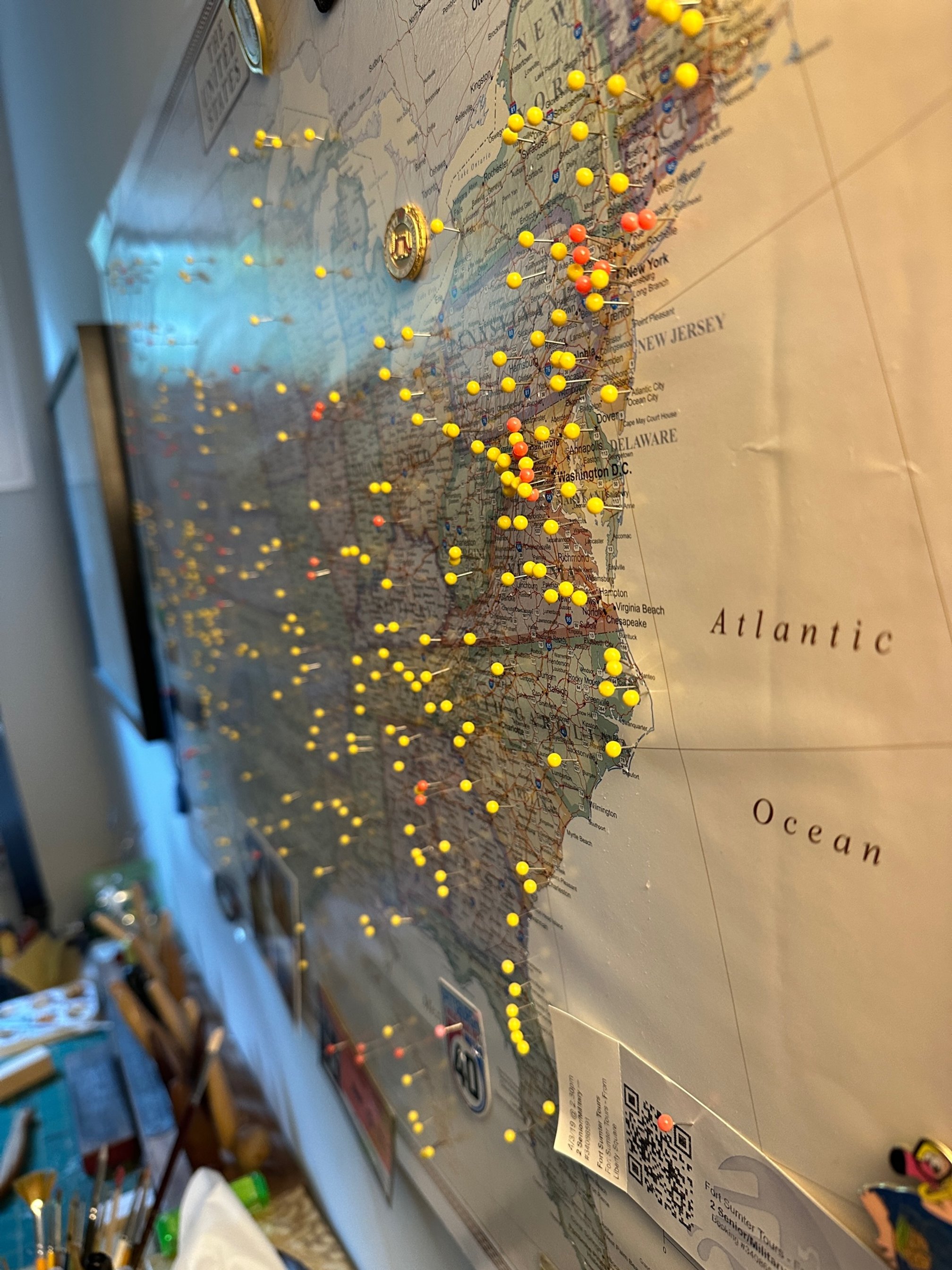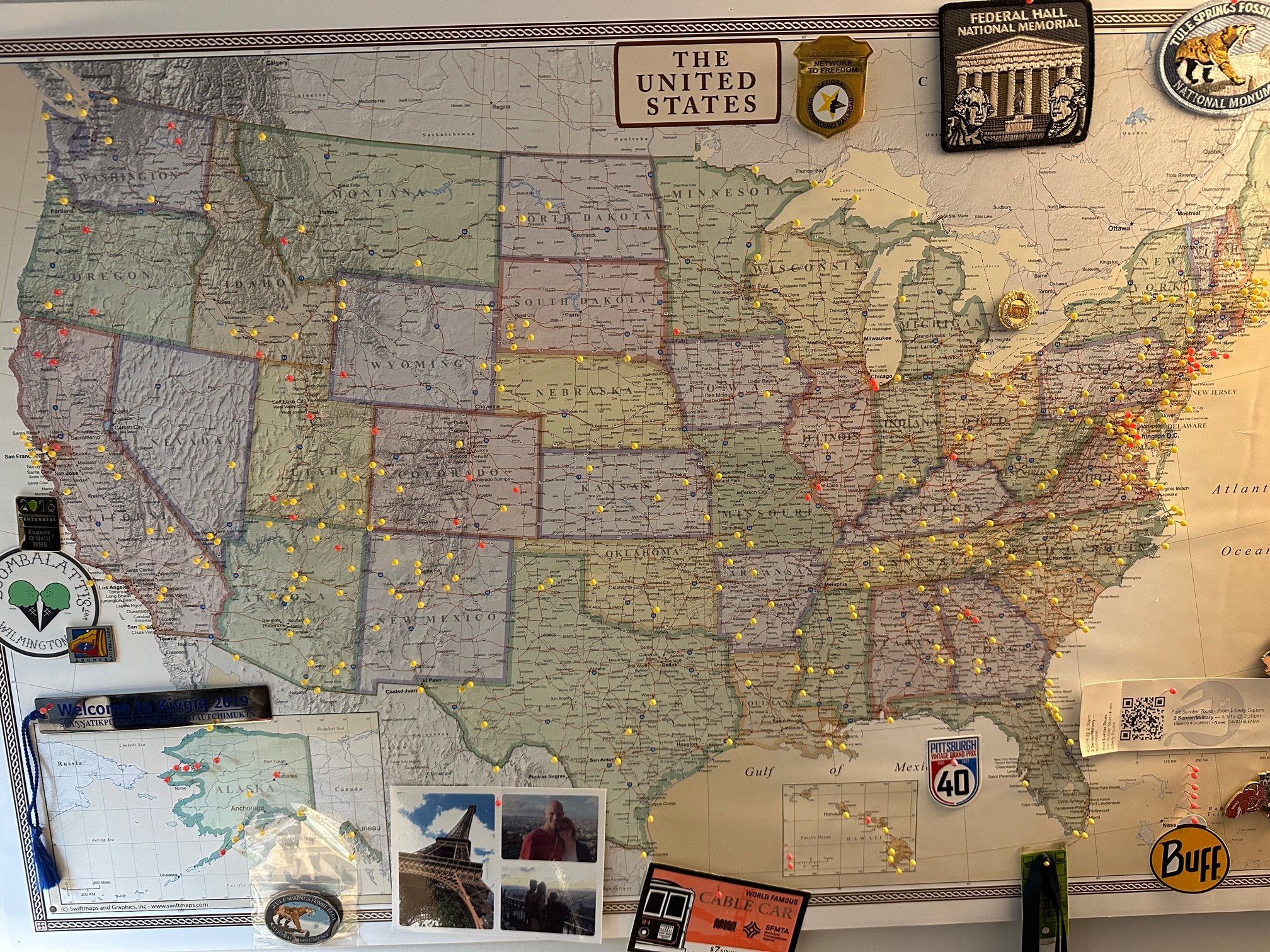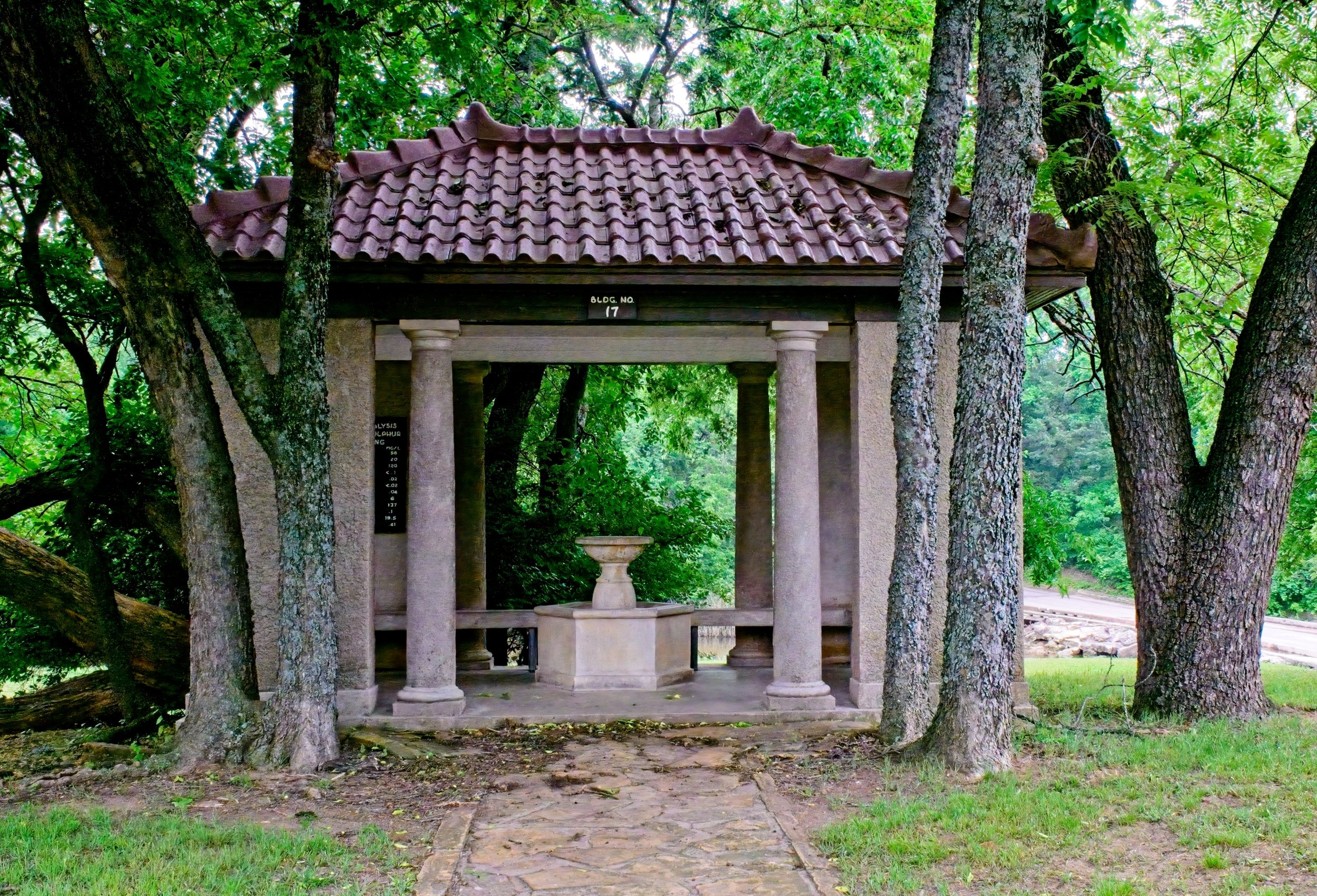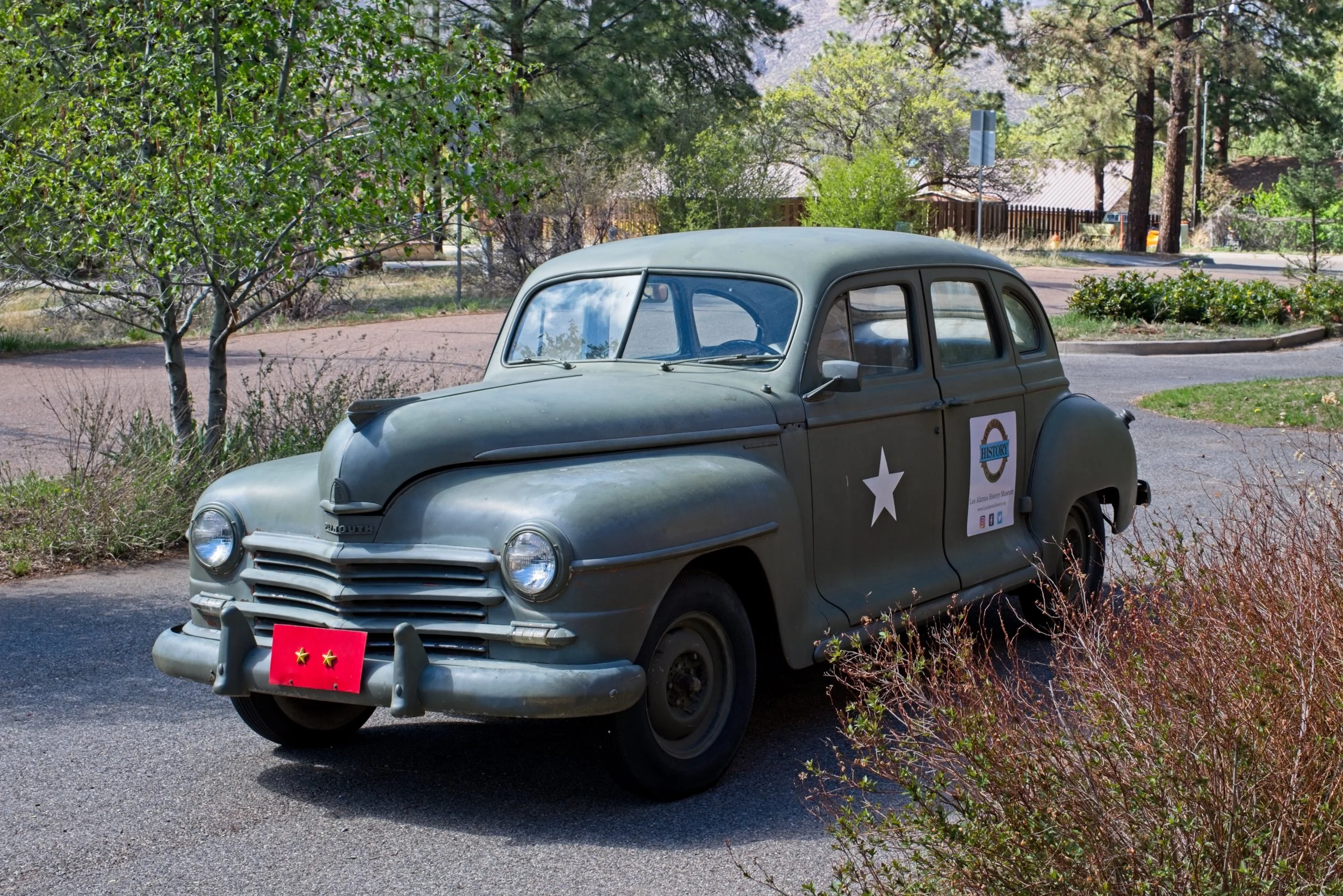These are both from the Great Smoky Mountains National Park and were taken in the fall of 2016. These two were both way too dark and before when I lightened them, I’m sure I did so incorrectly, they were dull and flat. Much better today. Love shooting in the streams of the GSMNP anytime of the year.
But "Where is the Moose?" /
This plaintive wail from the followers of Cadillac Moose is understandable as the beloved alces alces of the Two Lane Touring site has been mysteriously missing for weeks. I shall bring you up to date on the Case of the Curious Moose.
First through I must dispel a most guileful rumor that your host at the Two Lane Touring site was involved. Not true. Even as I approach the three-quarter of a century mark I must protest that traveling for many miles each day, hiking, tearing down and setting up camp, hiking, museums to visit, repairs and maintenance of car and trailer, photography, processing, posting each day of the journey, planning, daily repasts, shopping, and a bit of sleep ever left me too tired to also attend to the needs of the Moose. Rubbish, Cadillac simply vanished.
How, you say? Here is the tale as odd as it is true. It began as many of Cadillac’s misadventures do, with food. The Moose was doing pretty well six weeks into the journey, even if his expectation to supplant the quintessential coach of the Great British Baking Show, Paul Hollywood, was a quixotic quest with a certain conclusion, he was trying. Then we arrived at Big Bend National Park. At one place Mexicans had placed pottery and other bits on the ground to sell. Now no one was there, you left your funds in a jar and took your purchase. The Moose was sure he would find a taco or enchilada in one of the vessels and after trying on a spectacular hat he begin to explore the pots. We reminded him that we were leaving and expected he was back in his travel cubby. But, no. Another tourist picked up a large jar, paid his $10 and left with a Moose asleep in the bottom. Unfortunately for Cadillac this family was from Norway and leaving in the morning. Cadillac awoke in luggage somewhere over the North Atlantic and content with the situation, went back to sleep. Then things took an ominous turn.
In Oslo he was discovered by the customs agent and he had no papers. The poor Norwegian family claimed no knowledge of him and the government declared him a stow-a-way and would not allow him to leave the airport. At first the Moose was upset but soon realized a Moose in an Airport is a Curiosity and there were many places to get food and people glad to feed him. Not food he knew much about. However, soon was enjoying fårikå- a hearty stew, smoked salmon, lutefisk, Gudbrandsdalsost- a smelly brown cheese, and his favorite, sursild, pickled herring. He ate a lot of pickled herring.
Meanwhile the authorities at the airport were desperate to rid themselves of the havoc creating Moose. Mexico declared they had no moose and would not welcome one regardless of what kind of pot he was in. Canada insisted they had zero missing moose and did not need another, the USA refused to permit him with no vaccinations. Out of options and near panic over his escalating demands, they choose to declare him a “comfort” animal and go commercial to Canada where his handler would conveniently lose him in a forest. That plan went awry when the wildfires forced the plane to be re-routed to the USA but Dulles, Newark, Logan and Laguardia were all under restrictions because of the smoke so Raleigh was selected. When the plane landed and Cadillac noted familiar food was nearby he headed for the first Chick-fil-A he could see and that was, you guessed it, 1/2 mile from our house.
So he is back, but in quarantine until such time as the pickled herring breath abates, might be weeks.
We are so lucky.
Looking pretty swell in this fancy hat
Searching for the elusive taco
Early Harvest /
The basket of vegetables is from a farm house museum in Eastern North Carolina. I was revisiting some older photos (2016) looking for one specific photo and decided to see if some I never processed might be improved with the newer software and possibly better skills on my part. This photo was one of the first I did or rather re-did. The original was way overexposed and lacked detail. With the new ON 1 2023.5 I was able to get usable image.
Progress /
I found this photo from Summer 2016. It is the USA map I have just finished with a red pin for each National Park Service unit. At that point there were 418, now 424. I had not yet put in the yellow pins for the 40 or so parks we had visited. So as we visited and photographed a park, the red pin was replaced with a yellow pin. We are currently at 357 parks with 67 to go, a few of those are very unlikely but we are still looking at over 400.
Similar angle to the first shot but with the map on the wall this is best I could do.
Here is the map after our recent trip.
Sunday Scripture: Photo from Capitol Reef National Park /
Spring Hats /
At a garden in Albuquerque I spotted these three lovely ladies sporting playful straw hats and having a grand time exploring the flowers.
Late Night Check-in circa 1958 /
The Blue Swallow is on Route 66 in Tucumcari, New Mexico and has welcomed guests since 1939 including our son and grandson on their Western trip and us on our trip this spring. Our only night “out of the trailer.”
The “Long and Winding Road” /
What an outstanding journey we were blessed to enjoy this winter and spring. We left in January for Florida and stayed until March then on to West Texas with Janet and Rusty. After a month they headed back to Florida when we left Guadalupe Mountains NP. We headed West into NM, AZ, UT, CO, and back to NM before heading home with a final stop in Alabama at the Oliver Rally.
In total we drove 13,392 miles, visited 34 new National Park Service units and revisited 13 that we enjoyed in the past. Our current count for parks is 357 of 424. We missed two that we knew would not be available, one that we were unable to visit because of deep snow, still over 4 feet on the roads and one that we postponed because it could be accessed easier from one in Colorado that is on the dock for a Northwestern trip.
We were in 59 different places overnight. Our first choice is usually a state or national park (33), then we look to Harvest Hosts (10) for travel days and used several of these including, farms, restaurants, museums and private homes. We used commercial sites (11) when we needed laundry or sewer connections or it just made sense for the time and place we needed to be and no other parks were available. We also did COE sites (2), free spots (2) and Harman’s driveway while the proposed gazebo, parking pad, fire pit, landscaping and deck are still being discussed (1).
The parks varied from vast National Parks like Big Bend and Guadalupe Mountains, to one underground, Carlsbad Caverns, to the modest home of Medgar Evers in Jackson, MS. We enjoyed a future NP, Chiricahua National Monument, the “Big Five” in Utah and spent more time in the Petrified Forest than we did on our first visit there in 1976. Most of the parks were related to the Indians of the area and we were enthralled by most of them. We were in dwellings on cliff faces, in Pueblos, kivas and in some of the most remote spots in the Southwest. The oldest dated from about 700 AD and most were abandoned in the late 1200’s. Some are still active communities. We were able to see several state parks, lots of museums, some tourist stops and a ghost town or two. Our primary activity most days was hiking. Some were just a stroll to an overview or a building with others up to 6 miles across more rugged territory.
We celebrated our 52nd anniversary on the trip with a splurge dinner in Santa Fe at the El Farol - a restaurant since 1839. We enjoyed several other memorable meals along the way but most of the time we ate very well in the trailer. Cindy does a remarkable job in a very small space. I think we ate one or two breakfasts out, a couple of fast food meals - you miss Chick-fil-A after a while and some unique local meals like green chili burgers. There is a dearth of ice cream in places we did not expect, like Santa Fe and Albuquerque - some good bakeries though. But we still managed a few pretty good cones with the best at Brown Box in Kanab, UT.
The Oliver developed a few glitches, water pump was replaced, the AC controller needs replaced and we lost the brains of the solar, already replaced with a much better unit. We turned over 122,000 towed miles on this trip.
Plans are afoot for fall with Pennsylvania, Quebec and New England on the radar and possibly the last six parks in the Northeast. Depending in part on the fires?
Oh, I almost forgot, 10,813 photos with lots more yet to post. I know you’re thrilled:)
Cindy near the end of the 2.4 mile loop trail at Gila Cliff Dwellings. This is a very remote. end-of-the-road park in the mountains of central New Mexico.
Cindy took this of me on a trail in the harsh desert of the Grand Staircase-Escalante National Monument in southern Utah.
Long hike in a cold wind at Capitol Reef, beautiful park and great views.
Camping in 17 degrees, picnic anyone?
National Park #357 - Fort Smith National Historic Site /
The final park on our spring 2023 southwestern tour. This is less of a fort and more of a prison, or at least that is what it is famous (or infamous) for and it is that aspect of its history that is featured. The park was the last place on the Trail of Tears as the Indians were on their own after they crossed the river at the fort. Yet that is not the dark history we are referencing. While the fort was a central supply deport for other western forts it is the legal side that is emphasized here on the Arkansas - Oklahoma border. The “Hanging Judge” Isaac C. Parker, presided here for 21 years over 13,500 cases between Indians and settlers, outlaws and rustlers. He sentenced 160 people to death and most of them had no right of appeal. He is portrayed in several western genre movies most notably in True Grit. Today you can see his courtroom, the original jail, the “new jail” of the late 1800’s and a couple of additional buildings. It is a fascinating look at a different kind of justice.
A typical army supply wagon with the standard “mast” type flag pole and the commissary in the background.
The new jail is the building section on the right, the old jail was in the basement of the left side of the structure. The courtroom is on the top floor.
Judge Parker’s courtroom.
The gallows, reconstructed.
National Park #356 - Chickasaw National Recreation Area /
Chickasaw NRA was a surprise in south-central Oklahoma near the town of Sulphur. First, the setting was among rolling hills and pretty forests. Not my first thought about OK. Second, beside the lake which all NRAs seem to have, it has a northern section of ponds, streams, mineral springs, fresh water springs and nice views. Third, years ago it was a National Park, in fact it was Platt National Park until 1976. Who knew. Both the Santa Fe RR and the Frisco RR built spur lines to the park and Sulphur grew with hotels and infrastructure to accommodate the crowds of people. More people came in 1914 to Pratt NP than either Yosemite or Yellowstone. The current name honors the Chickasaw Indians who were relocated here in the 19th century and whose reservation abuts parts of the park.
A drive along the park road in the north led to the famous Lincoln Bridge built by the CCC and featured on the 2011 OK quarter. We stopped at overlooks, the bison park, some old springs and a steam as well as the bridge. There is a beautiful VC with enthusiastic staff who are very proud of their town and the park. Great visit.
The Lincoln Bridge was once the main entrance to the park. Not the towers with flag poles that you can walk up and around. There are four of these.
Travertine Creek
The Black Spring, one of many with elaborate coverings
The Learning Curve /
Learning software and the process of editing is complex and can be more involved than the taking of photos. And there is a lot to learn on these modern programs. I use ON 1 Photo Raw 2023.5. You know the marketing department were thrilled with that name that just rolls off your tongue. Despite the name I like the software. Is it the best? No idea. It works for me and fits my budget. Each year or so they offer updates, some free some pay and those updates offer new features and some of them are really helpful. Today’s two shots, an Acorn Woodpecker and a Gilded Flicker were both very underexposed in the understory of trees and hard to see. As in very hard, very dark. In the past you could edit them by building a complicated mask and brightening the main subject. Now I pushed this a bit past where I would normally just to illustrate the process. I used the new “encircle” tool, it built the mask on the bird, I raised the exposure, copied the mask, inverted the mask and darkened the background. It took 3 minutes, maybe. Nothing else was done and two images that would have been deleted can be used, especially with a bit more nuanced approach to the image. Learning new aspects of the software is a process and it is so neat when the product makes your part easier and faster.
Sunday Scripture: Photo from Big Bend National Park /
National Park #354 - Alibates Flint Quarries National Monument National Park #355 - Lake Meredith National Recreation Area /
We are doing these two parks together as Alibates is within the Lake Meredith NRA north of Amarillo, Texas. And both were a bit disappointing. Alibates is where Indians harvested flint. This was of a very high quality and they traded roughly shaped stone all across the west and Mexico. The stone would be finished, called knapping, into axes, spear points, arrow heads and scrapers. The day we arrived the ancient quarries were closed as they were repaving the road that week. So we saw the VC, a small museum, some sample flint and a display garden.
Lake Meredith was hard to access and the water was low. But we drove - with the trailer on rather poorly maintained roads, about 14 miles to a place where we could get to the lake. Underwhelming.
Fancy word meaning we arranged the rocks:) Or, https://en.wikipedia.org/wiki/Xeriscaping
Alibates VC.
National Park #353 - Fort Union National Historic Site /
How do you protect the Santa Fe Trail and the settlers, miners, ranchers and traders? You build a fort. Fort Union actually. The Santa Fe Trail goes through, not just near, the fort’s grounds. The fort, don’t think stockade but lots of buildings and corrals spread over a lot of acreage. Actually there was an earthen fort here first but it was never engaged and gradually it is disappearing. The second fort is what you get to explore. There are a lot of partial buildings and walls. Any of the bricks you see interspersed with the adobe were brought from the east by wagon. The fort had a wagon repair shop, a hospital, church, horses and oxen that could be exchanged or purchased but the primary buildings here were warehouses that supplies were collected and then distributed to several other forts from Fort Union.
These two men from England on the Santa Fe Trail, one of their goals for their trip to the “wild west.”
Looking through several warehouse walls in the harsh afternoon sun.
Contract workers for about 5 months of the year apply fresh “mud” from a nearby pit, mixed with water and some clay and applied by hand with thick rubber gloves over thinning adobe coverage.
Cemetery at Terlingua /
Terlingua was once a teeming mining town of about 5,000 people, now it is a ghost town, sort of. A few people still live here some in rebuilt housing, some in trailers, some in shacks. There is a big tourist type store, at least three restaurants, a couple of art galleries, an inn and lots of rubble. The cemetery dominates a portion of the site. Graves here date back to the mining heyday - they mined mercury here so lots of deaths from the environment. Some graves are recent, as late as last year. Few of the graves still have names, most are just a pile of rocks, a wooden cross and little trinkets left by visitors or friends. There were a lot of beer & whiskey bottles and scores of candles on the site. I was told by a resident that there are/were a lot of ex-military men drinking their disability or pension benefits each month. The cemetery was disquieting unlike most of the cemeteries I visit. Not sure why but it was not a place I was comfortable.
I also spent way too much time at home trying to find out stories of the people whose graves had names. Most did not even have an obituary that I could find but a few did. Two are below in the photos.
This man had a name he was born with and one he used. I found a warm note left by a young woman who played music with him at area bars. She said he was a “poet, writer, musician, philosopher and intellectual. And a great friend.” Behind the grave you can see the scars mining left behind
Could find nothing about Sergeant Holderman but clearly someone had the VA pay for a standard soldier’s tombstone. Almost seemed out of place here.
This man owned a very successful chain of chicken fast food places in a lot of Texas communities - hence Boss Bird. He also owned several other restaurants.
A grave from 2022 but I could find nothing about Annie. She clearly has some friends still in the area who remember her and left a carefully constructed monument.
Kayak on the Rio /
This is the Rio Grande near the western edge of Big Bend National Park. The kayak, paddled by a nice guy named Nathan, is coming through the Santa Elena Canyon section where the cliffs soar to 1500 feet over the Rio. You can and we did hike in about 2 miles and the scenery was stunning.
Fire Fog /
I never saw this kind of phenomenon before. We were traveling east from our campsite at sunrise. It was beautiful and we stopped to take a few images. Then as we traveled further toward the eastern portion of Big Bend National Park we saw lots of fog lifting and the sun just lit some of it up. Only lasted a minute but it was so pretty. Big Bend was fulll of surprises.
Grateful /
Today we honor the men and women who died in service to this country. The first official Memorial Day was held on May 5th in Waterloo, NY in 1866. Other places also claim to be the first but Waterloo is the official one. Originally called Decoration Day, you still hear that on occasion here in the South. People use that to decorate graves of loved ones beyond the original purpose of the day. May was chosen because the flowers are in full bloom. General Grant presided over the first large scale observance of Memorial Day in 1873 when 5,000 people attended at Arlington.
This car was used during WWII.
Sunday Scripture: Sunrise photo from St George Island State Park, Florida /
Desert Color /
These flowers appeared in the most unexpected places, packed red dirt, on a trail, in the edge of the old pueblos’ ruins. Don't know the name but then it would be unexpected if I did. If you do, leave a comment.














































